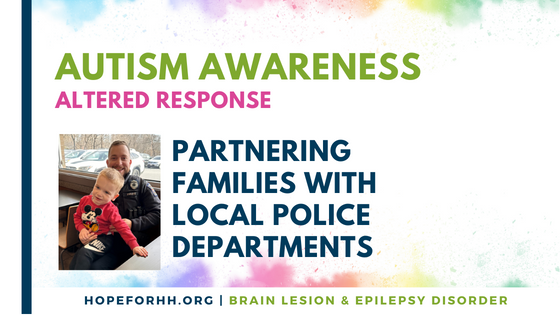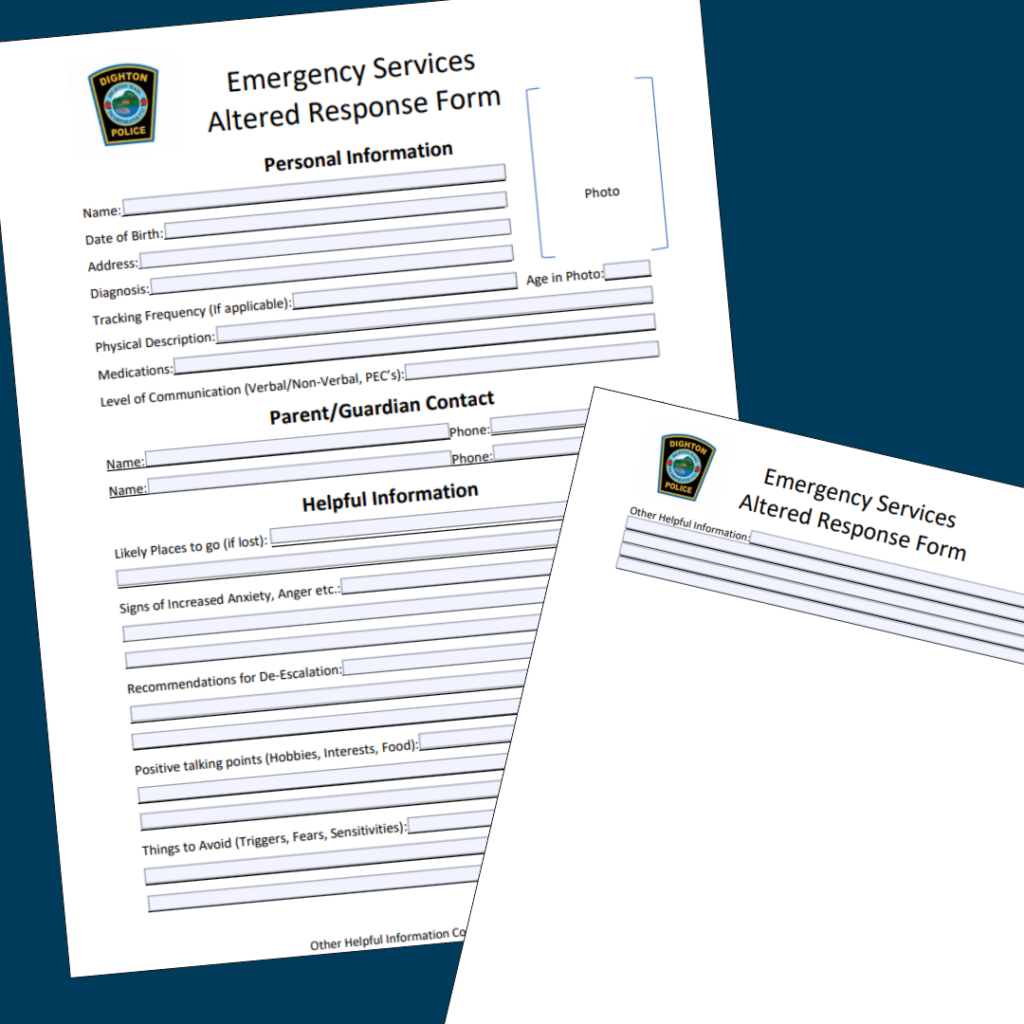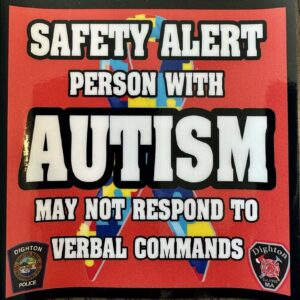
Altered Response
Hello! As some of you already may know, my name is Michelle, and my son Jaxon is autistic. Jaxon is considered non-verbal however he does communicate with his AAC (augmentative and alternative communication). Jaxon is considered a high support needs autistic individual. Jaxon has difficulty with safety awareness, eloping, and difficulty determining what to do in a dangerous situation. Given that some of our HH community is also on the spectrum or display other characteristics (decreased safety awareness, difficulty communicating, and rage behavior that may require intervention) I believe that this resource could be beneficial.
 This past summer there were numerous news postings about children diagnosed with autism who had water emergencies and unfortunately passed away. My brother-in-law AJ, who is a local police officer, kept thinking of Jaxon and what if this happened to him. When he would come to visit, he noticed that we had window-cling stickers on our front door, back door and Jaxon’s bedroom windows. The stickers we had informed that there was an autistic individual who may not respond to verbal commands. He reminded me of how important this is to first responders because immediately they will be aware of the altered response.
This past summer there were numerous news postings about children diagnosed with autism who had water emergencies and unfortunately passed away. My brother-in-law AJ, who is a local police officer, kept thinking of Jaxon and what if this happened to him. When he would come to visit, he noticed that we had window-cling stickers on our front door, back door and Jaxon’s bedroom windows. The stickers we had informed that there was an autistic individual who may not respond to verbal commands. He reminded me of how important this is to first responders because immediately they will be aware of the altered response.
This really sparked his interest in collaborating ideas to go to a higher level of increased safety for individuals on the spectrum. He decided to produce a form that would pop up in the dispatch system as soon as they received a call and to create our towns own stickers to place in the windows/doors. Essentially it would give a head start to the first responders going to a house with someone who would have an altered response and how to approach them.
 The form he created in our hometown’s dispatch is called, “The Alerted-Response Form”. This form includes a picture of the individual, name, address, diagnosis’, physical description, medications, tracking frequency (if any), level of communication, emergency contacts and my favorite part of the form was the helpful information. In this specific section, he added likely places to go if lost, signs of distress, recommendations for de-escalation, positive talking points/interests, and things to avoid. It is extremely user friendly, and it took me all of 5 minutes to complete. That 5 minutes could save my son one day if he ever eloped, was in danger or in a medical crisis. It is less nerve wracking knowing that if I have to call the police, fire department or ambulance. They already have a general background on Jaxon.
The form he created in our hometown’s dispatch is called, “The Alerted-Response Form”. This form includes a picture of the individual, name, address, diagnosis’, physical description, medications, tracking frequency (if any), level of communication, emergency contacts and my favorite part of the form was the helpful information. In this specific section, he added likely places to go if lost, signs of distress, recommendations for de-escalation, positive talking points/interests, and things to avoid. It is extremely user friendly, and it took me all of 5 minutes to complete. That 5 minutes could save my son one day if he ever eloped, was in danger or in a medical crisis. It is less nerve wracking knowing that if I have to call the police, fire department or ambulance. They already have a general background on Jaxon.

I cannot express to you how important this was to us when A.J not only created this form but implemented it in the department. It spread pretty fast where he was actually interviewed by local newscasts and other departments created something similar.
I wanted to share this with you because I think this is crucial in our community as a whole. I encourage you to talk to your local deputies and ask if they have something similar in place or what their protocol is for handling situations if you resonate with this.
Thank you again AJ for your dedication for raising awareness and going the extra step to change things!
AJ also created this sticker for awareness. Please feel free to print and share with your local authorities as a template as well!
To learn more about this program, check out this news report regarding AJ’s Altered Response program and how it’s helping families and law enforcement connect for the safety of those with autism.
Read our previous blogs from our Autism Awareness Series
- First Signs of Autism Spectrum Disorder in an Individual with Hypothalamic Hamartoma Syndrome
- Differential Diagnosis for those with Hypothalamic Hamartoma Syndrome and autistic characteristics
- Overlapping Characteristics of Hypothalamic Hamartoma Syndrome and Autism Spectrum Disorder
- Parenting from Different Points of View
- Coming to terms with a Rare Disease diagnosis and Autism
- Becoming an Advocate
- A Family’s Experience with HH and Autism
Read more about Michelle and Jaxon:





